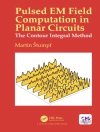Written from an operator’s viewpoint, HSPA
Performance and Evolution explores the lessons learned
and techniques developed for optimally deploying HSPA (High Speed
Packet Access). The essential distinctions between rolling out HSPA
compared to earlier UMTS and GSM technologies are explained
covering the many issues that must be specifically handled. Areas
in standards which have been left open for interpretation, causing
significant differences between vendor implementations, are
identified and solutions explored.
This book is invaluable in enabling wireless operators to
extract maximum performance offered by 3GPP’s HSPA radio
technology, consisting of both downlink (HSDPA) and uplink (HSUPA)
elements. It focuses on real-world performance, sharing practical
implementation methods and tradeoffs for deploying, optimizing and
maintaining networks using the HSPA air interface.
* Examines algorithms, equipment and performance perspectives to
identify and explain HSPA
* Measures performance and sets network parameters for optimal
tradeoffs
* Presents results from practical and real-world network
performances
* Explores the evolution of HSPA technology into HSPA+ and
eventually next generation LTE technologies
Tabella dei contenuti
1. Introduction.
1.1 Services and applications for HSPA.
1.2 Organization of the book.
1.3 References.
2. Overview of UMTS/HSPA Systems.
2.1 UMTS: GSM Evolution to 3G networks.
2.2 UMTS System Elements.
2.3 UMTS Radio Bearers and Services.
2.4 HSDPA (High Speed Downlink Packet Access).
2.5 HSUPA (High Speed Uplink Packet Access).
2.6 Summary.
2.7 References.
3. Applications and Quality of Service in HSPA Networks.
3.1 Application performance requirements.
3.2 Support of Qo S in HSPA networks.
3.3 Summary.
3.4 References.
4. Radio Resource Management in UMTS/HSPA Networks.
4.1 Admission and Congestion Control.
4.2 Packet Scheduler.
4.3 HSDPA Power Allocation.
4.4 Power Control and Link Adaptation.
4.5 Mobility management.
4.6 Summary.
4.7 References.
5. HSPA Radio Network Planning and Optimization.
5.1 Key differences between HSPA and legacy Rel’99 channels.
5.2 Link budget analysis.
5.3 Overview of system level simulations.
5.4 Cell Planning Process.
5.5 Optimization with drive test tools.
5.6 Main radio parameters affecting HSPA performance.
5.7 Dynamic Network Optimization (DNO) tools.
5.8 Summary.
5.9 References.
6. HSPA Radio Performance.
6.1 HSDPA performance Evaluation – Lab.
6.2 HSUPA performance – Lab.
6.3 Field evaluation.
6.4 Other Performance Considerations.
6.5 Summary.
6.6 References.
7. Capacity Growth Management.
7.1 UMTS/HSPA carrier deployment strategy.
7.2 Data Traffic Profiling and Network Dimensioning.
7.3 Summary.
7.4 References.
8. HSPA Evolution (HSPA+).
8.1 Standards Evolution.
8.2 HSPA+ Radio Enhancements.
8.3 Architecture Evolution.
8.4 Converged voice and data networks: Vo IP.
8.5 Summary.
8.6 References.
9. Technology strategy beyond HSPA.
9.1 Introduction to Evolved UTRAN.
9.2 Analysis of HSPA vs. LTE.
9.3 LTE Deployment and Migration Scenarios.
9.4 Summary.
9.5 References.
Circa l’autore
Pablo Tapia is a Principal Engineer at T-Mobile, US. He delivers consultancy services to T-Mobile USA within the Network Evolution and Strategy Group at T-Mobile Headquarters, working closely with Nokia and Ericsson. Before moving to the US he was Lead Consultant at Optimi in Spain, where he supplied T-Mobile International (15+ operators) with a corporate solution for WCDMA Optimization, including RF planning and optimization. Previous to this he set up Nokia Networks R&D center in China. He has a multidisciplinary background, including experience in R&D in network vendors, software development and operator experience, with contribution to multiple papers, and co-designer of several patents. He is a contributor to two Wiley books.
Jun Liu is also a Principal Engineer at T-Mobile, US. He has co-authored a number of papers with Pablo Tapia.












